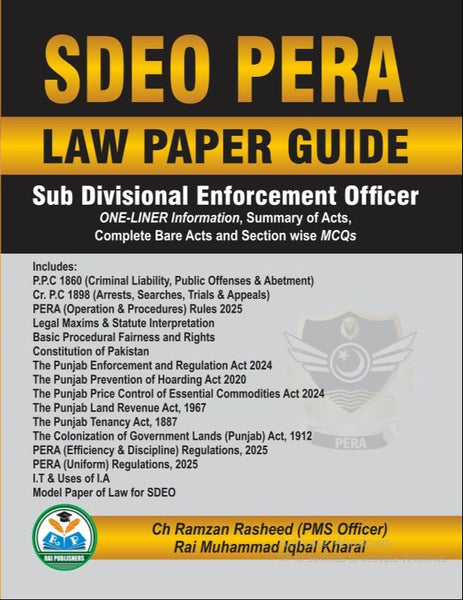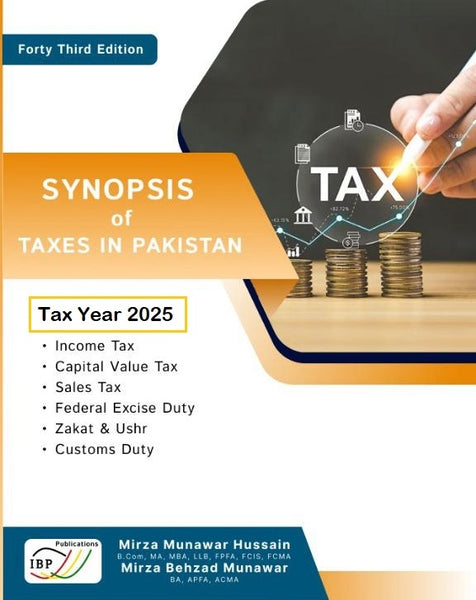Land Revenue Act 1967
- Publisher: MANSOOR BOOK HOUSE
- Availability: In Stock
- SKU: 11405
Rs.750.00
Rs.1,000.00
Tags: Agricultural Land , Agricultural Land Use , Agricultural Productivity , Digitization of Land Records , Land Acquisition for Public Projects , Land Disputes , Land Management in Pakistan , Land Ownership , Land Records , Land Revenue Act 1967 , Land Revenue Adjudication , Land Revenue Penalties , Land Revenue Reforms , Land Revenue System , Land Survey , Land Transactions , Land Transfer , Ownership Transfer Process , Pakistan Agricultural Law , Pakistan Land Law , Penalty for Non-Payment , Public Purpose Land Requisition , Record of Rights , Revenue Collection , Revenue Court , Revenue Officers , Revenue Settlement , Tenancy Rights , Tenant Protection
The Land Revenue Act of 1967 is a significant piece of legislation in Pakistan that governs land revenue management. It is designed to manage land transactions, land ownership, and revenue collection processes within the country. The Act primarily focuses on regulating the land revenue system, providing a legal framework for land surveys, assessments, and settlement of land disputes.
Key Provisions of the Land Revenue Act, 1967
-
Definitions and Scope:
- The Act defines terms like "land," "revenue," "settlement," and "assessment," which are crucial for understanding the operation and administration of land revenue systems.
- It applies to the collection of land revenue, management of land records, and settlement of land disputes.
-
Land Revenue and Assessment:
- Land Revenue: The government imposes a revenue on agricultural land, which is typically assessed based on the area, quality, and productivity of the land.
- Revenue Settlement: The Act allows for periodic settlements, where the revenue rates are reassessed and adjusted based on changes in land productivity, cropping patterns, and economic conditions.
-
Land Records:
- The Act provides for the maintenance of accurate and up-to-date land records. These records are used to establish land ownership, track land transactions, and determine the amount of revenue payable by landowners.
- Record of Rights: This includes details of the landholder’s rights, ownership, area, and the revenue due. It also includes information on tenancy, cultivators, and other relevant aspects of land use.
-
Land Survey and Settlement:
- The Act allows the government to conduct surveys and settle land issues periodically. This involves verifying boundaries, ownership, and land classifications (e.g., irrigated or non-irrigated).
- Re-Surveying: The Act permits re-surveying of land in case of disputes or changes in the land use, ensuring that accurate records are maintained for tax purposes.
-
Land Revenue Courts:
- The Act establishes the authority of Revenue Courts to adjudicate disputes related to land revenue matters. These courts are empowered to hear cases involving land transactions, assessments, encroachments, and land revenue dues.
- The Revenue Officer is tasked with determining the amount of land revenue due from landowners and resolving issues related to land use.
-
Penalty for Non-Payment of Revenue:
- Failure to pay land revenue can result in penalties. The Act outlines the penalties for non-payment, which could include fines, interest on overdue payments, or even attachment and sale of the land.
- Defaulter's Penalty: The law allows for the seizure of land or property for non-payment of revenue.
-
Land Requisition and Compensation:
- In case the government requires land for public purposes, the Act outlines the process for requisitioning land, including providing compensation to landowners based on the market value of the land.
- Requisitioning Land for Public Use: The government may take possession of land under the Act for constructing infrastructure or other public projects.
-
Tenant Rights:
- The Act addresses the rights of tenants who are cultivating land owned by others. It ensures that the revenue is collected from the landowner and not from the tenant unless specified.
- Tenancy Issues: It deals with tenant disputes regarding land ownership and sharecropping arrangements.
-
Reforms and Updates:
- Over the years, the Act has been updated to align with the evolving needs of land management and the changing agricultural landscape. Changes often address modern land use, new revenue models, and the protection of farmers' rights.
-
Transfer of Land:
- The Act regulates the process of transferring land ownership through sales, inheritance, or leases. These transactions must be recorded in the land revenue records to be legally recognized.
- Title and Ownership: The Act ensures that land titles are updated with every transfer, helping to avoid disputes regarding land ownership.
Key Features and Objectives
- Simplification of Revenue Collection: The Act seeks to simplify and streamline the collection of land revenue, improving efficiency and transparency.
- Strengthening Land Rights: The law strengthens land rights by establishing clear guidelines for ownership and the collection of revenue.
- Protection of Farmers: The Act includes provisions to protect farmers, particularly tenant farmers, from exploitation by landowners.
- Dispute Resolution Mechanism: Revenue Courts play a critical role in resolving disputes related to land, ensuring that landowners' rights are upheld.
Amendments and Impact
The Land Revenue Act of 1967 has undergone several amendments, especially to meet modern needs such as improving land record-keeping, digitizing records, and providing better access to land-related information for landowners.
In recent years, digitization has become a major area of reform to make the land record system more transparent and reduce corruption in land transactions. Additionally, as land management and property disputes remain central to many socio-economic issues, the Act continues to play a crucial role in managing the land revenue system and maintaining agricultural productivity.
Conclusion
The Land Revenue Act of 1967 is a foundational legal framework for managing land revenue in Pakistan. It governs land ownership, revenue collection, disputes, and tenancy, ensuring a structured approach to land management. With its provisions for land surveys, assessments, and dispute resolution, it provides a comprehensive mechanism to handle the complexities of land administration. The act has undergone significant updates over time to adapt to the changing needs of the agricultural sector and land management. It is a vital tool for ensuring efficient land use, protecting farmers’ rights, and promoting fair revenue collection practices.

























